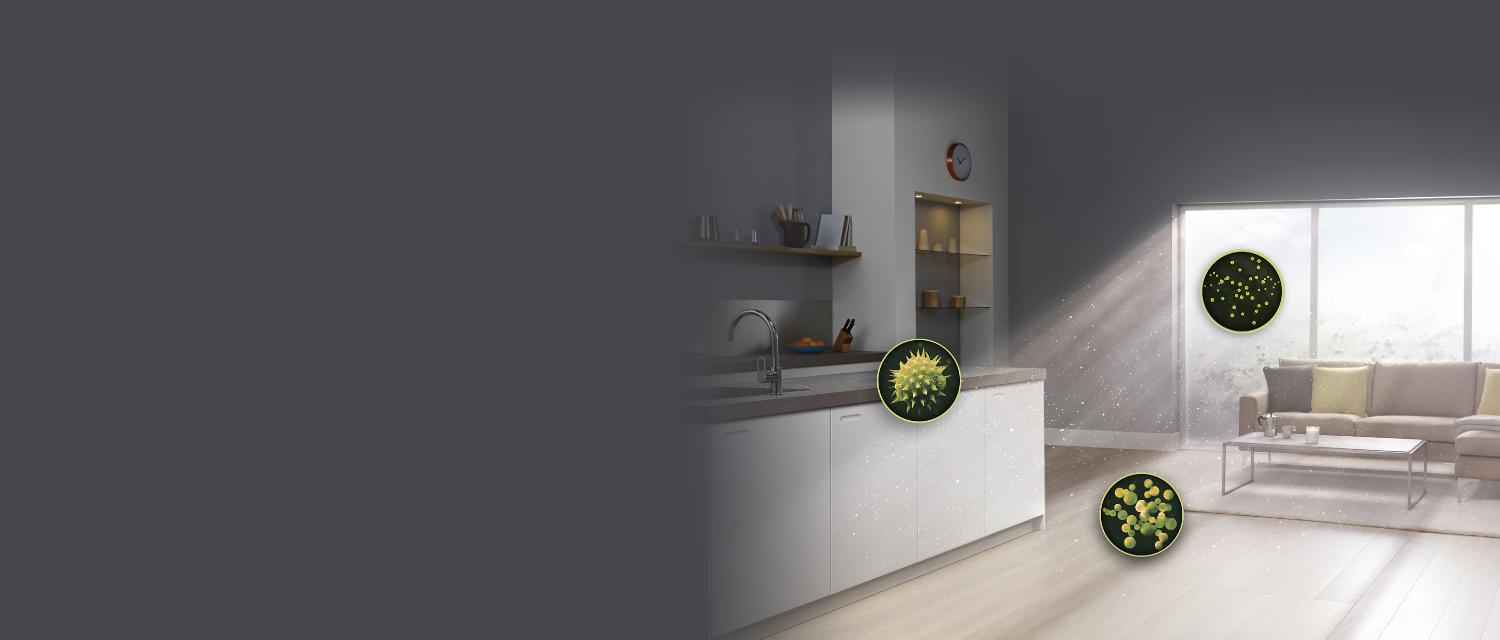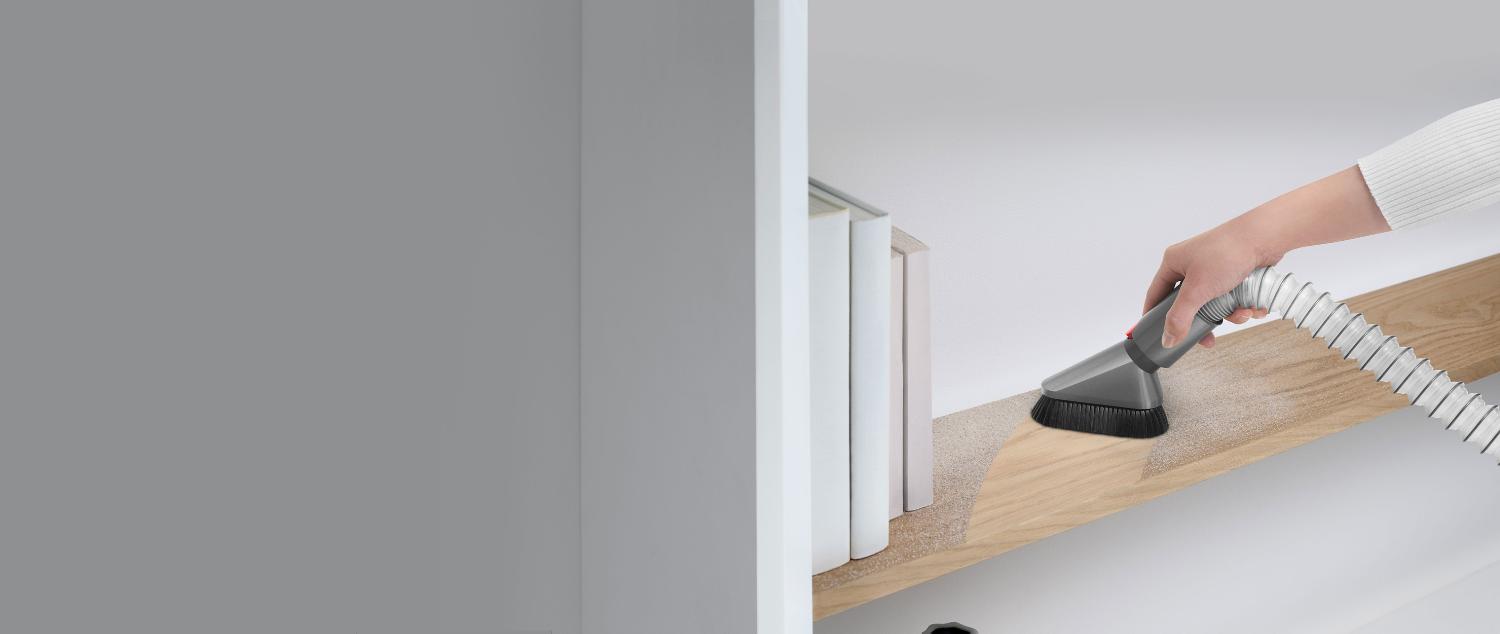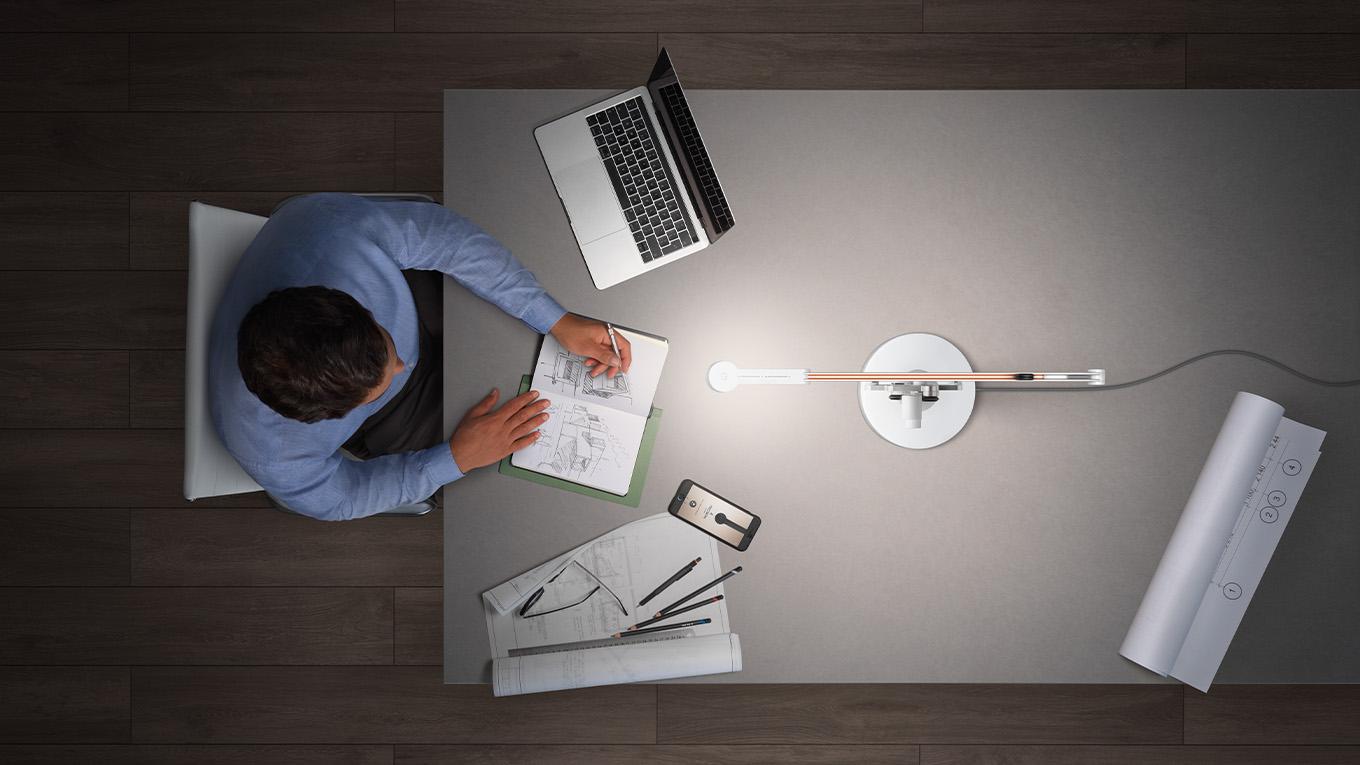
How to remove household dust
We spend up to 90% of our time indoors, according to estimates from the World Health Organization (WHO). So removing household dust through regular cleaning, home maintenance, and home improvement projects is important for our wellbeing.
Understanding household dust
Dust is made up of various microscopic particles, and indoor dust can be a collection of bacteria, pollen, smoke, dirt, pet dander, hair, skin cells, and pollution. According to the Dyson Global Dust Study, it can be displaced by sitting on a sofa or turning on air conditioning. This means it's airborne before settling on surfaces, in corners, and under furniture.
The study, which included 10,754 participants from 10 countries around the world, found that 1 in 4 people feel “extremely worried” about indoor dust at home. It also found that 1 in 5 people were surprised to learn that dust can contain viruses.
Not only is dust unsightly, but it can contain allergens, which can trigger allergies. Reducing household dust is therefore important for our wellbeing. Some common symptoms of dust allergies include:
- sneezing
- itchy, watery, red eyes
- stuffy or runny nose
- wheezing or coughing.
The study found that 77% of people believe the less dust there is in their homes, the healthier their home is.
Where does dust accumulate?
There are many areas around the home where dust can accumulate, including corners of walls and floors, skirting boards, the tops of photo frames and light fixtures, at the backs of wardrobes, and on window sills and shelving.
How to get rid of dust
Creating a regular cleaning schedule, improving indoor air quality, and dusting overlooked areas are key to reducing household dust.
Wash fabrics and upholstery
Dust, dust mites, and other particles cling to fabrics and upholstery. Washing bedding, blankets, curtains, and other fabrics on a regular basis, and using vacuum attachments to clean mattresses, couches, and other upholstery helps remove household dust.
Vacuum regularly
A vacuuming schedule helps to ensure that dust, dirt, debris, and pet hair are cleaned on a regular basis. Hard floors, carpets, and rugs are commonly vacuumed, but upholstery, mattresses, ceilings, and walls may be overlooked.
Vacuum slowly to allow the brush bar more time to remove and pick up dust. A vacuum with illumination technology helps to illuminate dust on hard floors to make it visible.
Some attachments help to clean upholstery and reach high-up spaces, while attachments with soft bristles allow you to dust blinds without damage.
Beating your rug outdoors helps remove additional dust and dirt before vacuuming.
Wipe down surfaces
It’s common to clean dusty surfaces with a wet cloth, but the most effective method for eliminating household dust, including dust mites and their droppings, is to vacuum them first.
Vacuum hard floors then use attachments for surfaces and fabrics. Afterwards, mop the floors and wipe down the surfaces with a wet microfibre cloth. This will attract and hold onto remaining dust.

Purify indoor air
Air purifiers assist in eliminating household dust by helping clean the air at home. These machines are engineered with technology that traps dust before it settles on your furniture and floors. Dyson purifiers capture 99.95% of dust and ultrafine particles. Some of our machines also link up to a smartphone app to deliver indoor air quality reports.
If your purifier seems to be running more than usual, or you’re noticing that your furniture gets dusty soon after cleaning, your filter may be clogged. It's advised to change it regularly.
Groom pets
Pet hair mixes with dust and other particles, and pet dander can trigger allergies.
Regularly grooming and bathing pets helps to remove dead skin cells, which make up dander, and reduces the amount of hair dropped on your floors.
If you have cats, keeping the litter box covered helps to reduce dust as well.
Reduce humidity levels
According to the American Lung Association, dust mites absorb moisture from the air, so the more humid your home is, the more likely you’ll have dust mites.
Home relative humidity levels should be kept between 40-60%.¹ This also helps lower static electricity levels. The higher the static electricity, the more likely dust is to stick to surfaces, making it harder to clean. Dehumidifiers can help keep indoor humidity levels low.
Use welcome mats
Welcome mats help to reduce outdoor dust and allergens entering the home.
An indoor mat near your front door provides a second opportunity to wipe off shoes and remove even more outdoor particles.
Adopting a “no shoes in the house” rule also prevents the spread of outdoor particles throughout your home.
Install hard flooring
Dust and dust mites can trigger allergies. If you’re finding that your allergies are constantly flaring up and you have carpets throughout your house, consider removing the carpeting and replacing with hard flooring.
Household dust, dust mites, and other allergens can get trapped between carpet fibres, even with vacuuming. Hard floors may be better to help relieve severe allergy symptoms.
Shop the air treatment range
Free scheduled delivery
35-day money back guarantee
Related Articles
Sources
¹ Arundel AV, Sterling EM, Biggin JH et al. (1986). Indirect health effects of relative humidity in indoor environments. Environmental Health Perspectives 65: 351-361
https://www.nationalgeographic.org/encyclopedia/dust/
https://www.marthastewart.com/8116134/how-dust-works
https://www.lung.org/clean-air/at-home/indoor-air-pollutants/dust-mites
https://acaai.org/allergies/allergic-conditions/dust-allergies/
https://www.lung.org/clean-air/at-home/dust-briefing
https://www.familyhandyman.com/list/cleaning-tips-to-reduce-household-dust/
https://www.tasteofhome.com/collection/ways-to-get-rid-of-dust/
https://airpurifiers.com/air-purifiers-reduce-dust-in-your-home/
https://www.bobvila.com/slideshow/20-remarkably-easy-ways-to-create-a-dust-free-home-47177
https://www.hgtv.com/lifestyle/clean-and-organize/keep-dust-down
https://housecleaningcentral.com/cleaning-tips/tip/top-10-benefits-of-keeping-your-house-clean/
https://hcprofessionalcleaning.com.au/blog/benefits-dust-free-home/
https://www.bobvila.com/articles/how-often-to-change-a-furnace-filter/





